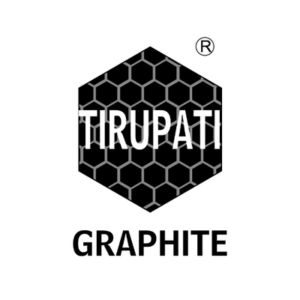Graphite is one of the three natural forms of carbon, alongside diamond and coal. It is essential in various industries, from lithium-ion batteries and nuclear reactors to its common use as the “lead” in pencils. Its softness and greasy texture, along with its characteristic black or grey colour, give it unique properties. Naturally occurring graphite exists in three forms: flake graphite in metamorphic rocks, amorphous graphite in coal beds, and crystalline flake in vein deposits.
Graphite is highly heat-resistant and largely unaffected by most acids and chemical reagents. It also conducts electricity and heat exceptionally well, making it valuable in different applications, including dry lubricants and brake linings.
In pencils, graphite is widely recognised as the main writing element. Unlike the lead used historically, graphite is safe and produces erasable marks. The word “graphite” originates from the Greek term for “to write”.
In batteries, graphite is crucial in lithium-ion technology, where it functions as the host for negative electrodes. Its excellent conductivity, due to free electrons, makes it a preferred material for battery anodes. This property is particularly important in fast-charging batteries used in smartphones and electric vehicles. Graphene, a single layer of graphite atoms in a two-dimensional honeycomb lattice, is highly conductive, lightweight, and allows efficient energy storage. Lithium-ion batteries featuring graphite are used in electric vehicles, UPS systems, and solar storage.
Graphite’s role in nuclear reactors has historical and current importance. It withstands extreme temperature and pressure and helps moderate neutron speed, facilitating nuclear reactions. Graphite also enhances reactor safety by providing structural support for CO2 gas flow and aiding in heat removal from nuclear fuel.
In the electrical industry, the crystalline form of graphite is valuable due to its conductivity and ability to dissipate heat. It plays a significant role in nanotechnology, where carbon nanotubes are becoming increasingly popular. Graphene, a synthetic single-layer form of graphite, is rolled into nanotubes used in miniaturised electronic devices.
Due to its thermal resistance and mechanical stability, graphite is widely used in refractories and arc furnaces. In steel production, graphite electrodes are used in electric arc furnaces, primarily by mini-mills. It acts as a protective agent for steel ingots and lines furnaces, while powdered graphite serves as a carbon enhancer to strengthen steel.
Graphene, derived from graphite, is known for its remarkable strength and electrical conductivity. Its applications span various industries, including biomedicine, where it is used for biosensing and membrane technology. In sports equipment, graphene is used to improve strength, responsiveness, and durability. Technological advances continue to reveal new potential applications for graphene.
Currently, synthetic graphite is more expensive than its natural counterpart, driving demand for naturally occurring graphite. With its wide-ranging industrial uses, it’s understandable why investment in graphite mining is on the rise.
Tirupati Graphite PLC (LON:TGR) is a fully integrated specialist graphite and graphene producer, with operations in Madagascar and India. The Company is delivering on this strategy by being fully integrated from mine to graphene. Its global multi-location operations include primary mining and processing in Madagascar, hi-tech graphite processing in India to produce specialty graphite, and a state-of-art graphene and technology R&D center to be established in India.


